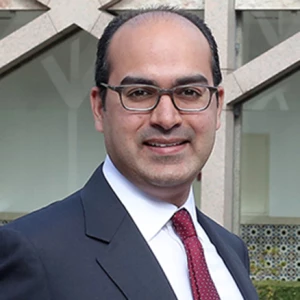When the World Bank set out to develop the Human Capital Project (HCP), a global effort to accelerate more and better investments in people for greater equity and economic growth, the HCP team committed to new ways of working. In just three months, the team delivered a flagship product that normally would have taken at least a year to prepare. Since the product’s launch, leadership in 77 countries have committed to create bold new programs to realize the benefits of investing in human capital.
Amid the COVID-19 pandemic, agile ways of working have persisted at the World Bank, creating tangible benefits for the organization and its clients. Annette Dixon, the vice president of human development at the World Bank, noted:
"Delivering the Human Capital Project in an agile way set in motion an important shift in mindset. Our people realized that we can work differently. When the COVID-19 crisis hit, that mindset was activated in an incredibly powerful way. We delivered more than 100 projects in just 10 weeks—work that we usually deliver in a one- to two-year window in normal circumstances."
As public-sector organizations navigate this period of prolonged uncertainty, agile will be more valuable than ever, allowing teams to react quickly to changing circumstances and seize new opportunities as soon as they emerge.
Members of the World Bank’s HCP team recently sat down with Qahir Dhanani, a BCG partner and a leader in the firm’s global development team, to share their knowledge and lessons learned that other institutions may draw upon.
What Is the Human Capital Project?
Annette Dixon: The Human Capital Project came about because the bank had much stronger evidence that human development outcomes directly impact on economic growth and poverty reduction. We’ve all known it’s intuitively important to make sure that all kids are healthy and well educated, but now we know it’s really important for the development of countries as a whole. And so, we were trying to help countries to see how they compare on making progress on these important health and education outcomes, the ones that really track directly to growth.
And our bosses set us a really ambitious goal to come up with an instrument that we could actually present to countries, to really show how well they were doing relative to each other.
The Team Had Three Months to Deliver a New Flagship Product
Kavita Watsa: I think you would probably expect a year to deliver something like this. The time we were given was very short: it was just three months. So we were up against a very serious deadline. It was a hard deadline because the index had to be launched at the Bank/IMF Annual Meetings in Bali in 2018, and so there was no getting past that. We just all had to be delivered and done.
A New Way of Working Was Essential
Jason Weaver: So, agile at the World Bank, we think of it with two different meanings. There’s capital “A” Agile and lowercase agile. The bank is trying to be lowercase agile, trying to be more nimble, more efficient, more effective. To do that, we pull from capital “A” Agile, the method, the principles, the tools, the techniques.
Dena Ringold: We started with regular check-in meetings even before we were seated together. We collectively designed an open space.
I also think that one of the things that the agile mindset brought was this idea of sprints. So we had a number of core deliverables, and we were able to define those and sort of bring our collective energy almost sequentially.
Jason Weaver: We were blessed in some ways that we started with a new team, and that allowed us to think right away about how could we utilize a cross-functional team, how could we work in iterative ways, how could we focus on minimally viable products that then build, how can we generate as much value as possible for our clients, internal and external. We utilized an open space. We had large whiteboards. We maintained a backlog of ideas and activities. All of these things were agile ways of working that we basically just used as our normal mode of working.
How Does Agile Deliver Value?
Annette Dixon: One of the reasons I like agile is because I think it turns organizational structures upside down, and it empowers the frontline teams. Often, I think, in big bureaucracies there’s a real breakdown in communication between the frontline team and the senior management. And this actually creates a direct channel, if you like, because the way the teams approach solving their problems and the sense that they get that they can actually take control over some of the things that they feel are standing in the way of them being successful is really, in a way, it’s revolutionary. And I really hope that that can be a great legacy here at the World Bank, because we’ve got great, fantastic people working in our frontline teams.
Contact







